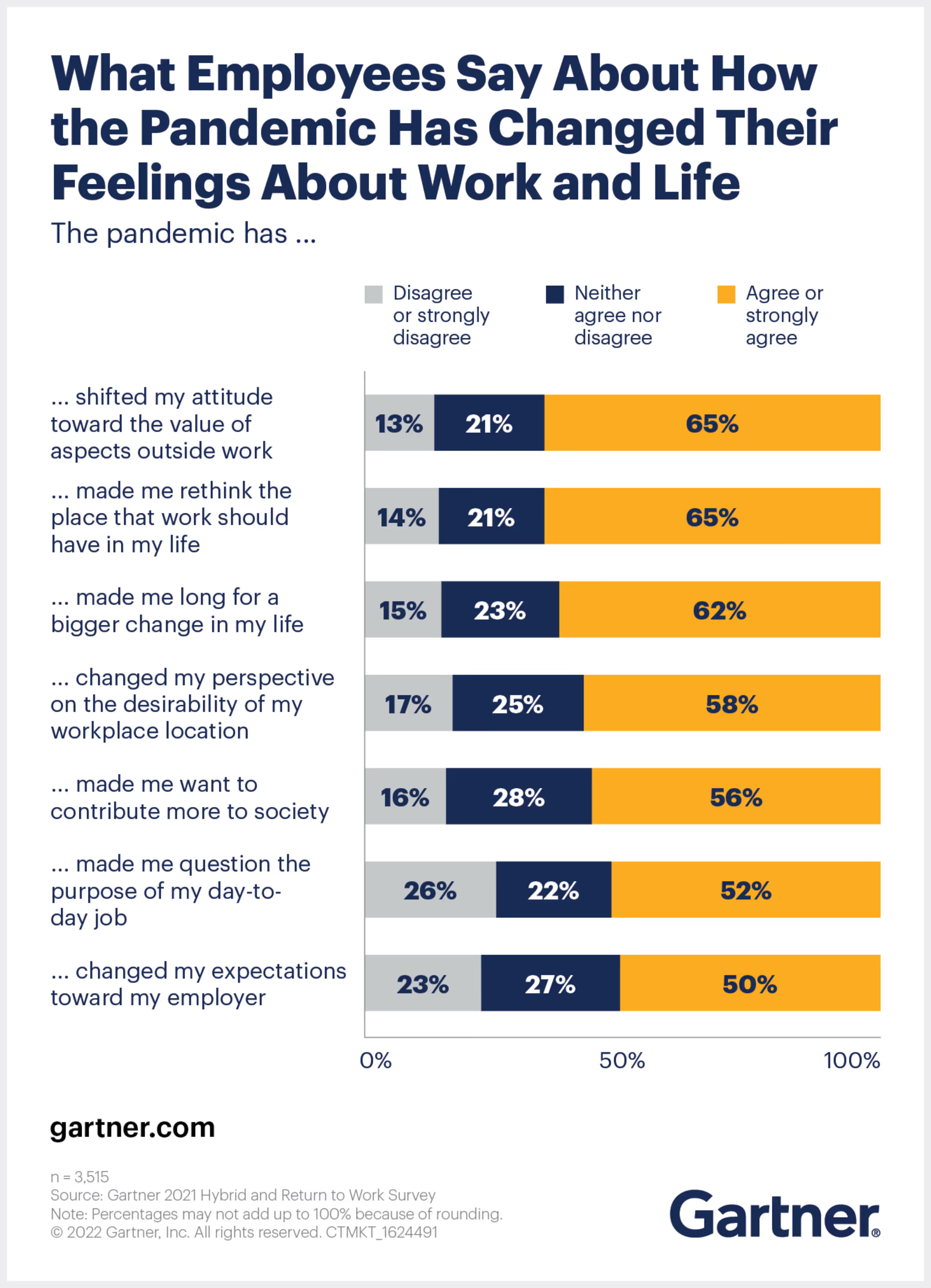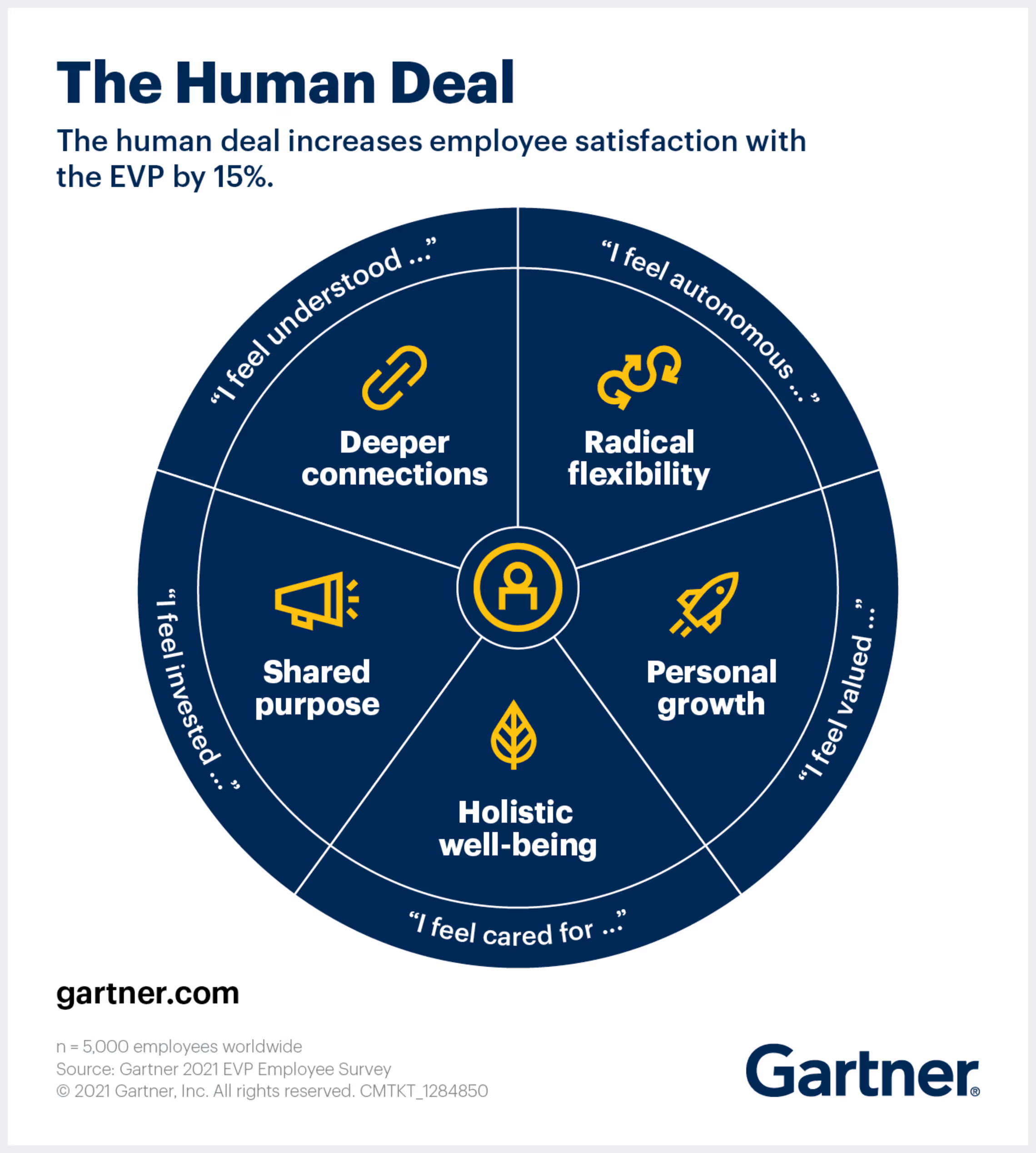3 things the Great Resignation teaches us about L&D
Times are changing. The pandemic is forcing organisations to rethink how they approach their relationships with their employees and L&D is poised to take centre stage in shaping a new employee experience.

Back in November, 4.5 million Americans quit their job.
That's the highest number ever recorded since the government began keeping records.
This huge trend towards people quitting their jobs has come to be known as “the great resignation”.
Spurned on by the Covid-19 crisis, people are realising that their work lives are either unsustainable, unattractive or untenable.
This has (or should have) caused all businesses to reconsider their offerings to their employees.
A job is more than a salary.
Here’s a fun fact I think Covid helped illustrate for most people.
From 1979 to 2020, worker productivity increased on average by 61.8%, while workers' hourly pay only grew 17.5% over the same period when adjusted for inflation.
So if worker pay isn’t keeping up with worker output, then the entire employee package becomes more important for attracting and retaining talent.
Gartner has produced some excellent research on how the pandemic has shifted employee values.

Off the back of this and research conducted with 5,000 workers from across the world, they have created the new human-oriented employee value proposition (EVP) which outlines the aspects that contribute towards employee satisfaction.

As you can see, none of this is focused around pay or financial benefits. Instead the five pillars fall firmly in the jurisdiction of HR and L&D leaders. By creating an environment where employees feel heard and listened to, whilst being able to upskill themselves and learn from others, L&D can take centre stage in reshaping organisation’s EVPs and help offset the effects of the Great Resignation.
L&D is a valuable recruitment tool.
One misconception that needs to be dispelled is that the Great Resignation is hitting lower paid roles and entry level jobs disproportionately.
That’s simply not true.
Resignation rates are the highest in the technology sector and healthcare industries with mid-career employees being more likely to resign than those at the start or end of their careers. This is something that organisations have to consider if they want to hire and retain top talent.
And one of the key ways they can do this is by offering development opportunities. By showing potential employees you care about and invest in their development, you can help attract more and more applications for those key job vacancies.
But it’s also a core part of economic prosperity.
Utilising L&D initiatives to combat the effects of the great resignation aren’t just an organisation level issue.
It’s an economic issue.
The World Economic Forum has stated that the key to maintaining global recovery from the pandemic is that the world’s richest countries need to invest in reskilling and upskilling their workforces. This is to accommodate for the increasing digitisation of certain industries and the increasingly common hybrid work arrangements that will become commonplace because of the pandemic.
And by putting in plans to upskill and reskill your employees, you’ll be ahead of the curve and more progressive than most of your competitors! Studies have shown that a whopping 68% of HR leaders don’t currently have a plan for how they are going to help employees adjust for the future of work.
By keeping your learning culture forward-looking, you can both help to beat the effects of the great resignation AND stay one step ahead of your competitors. Did someone say win-win?


.svg)